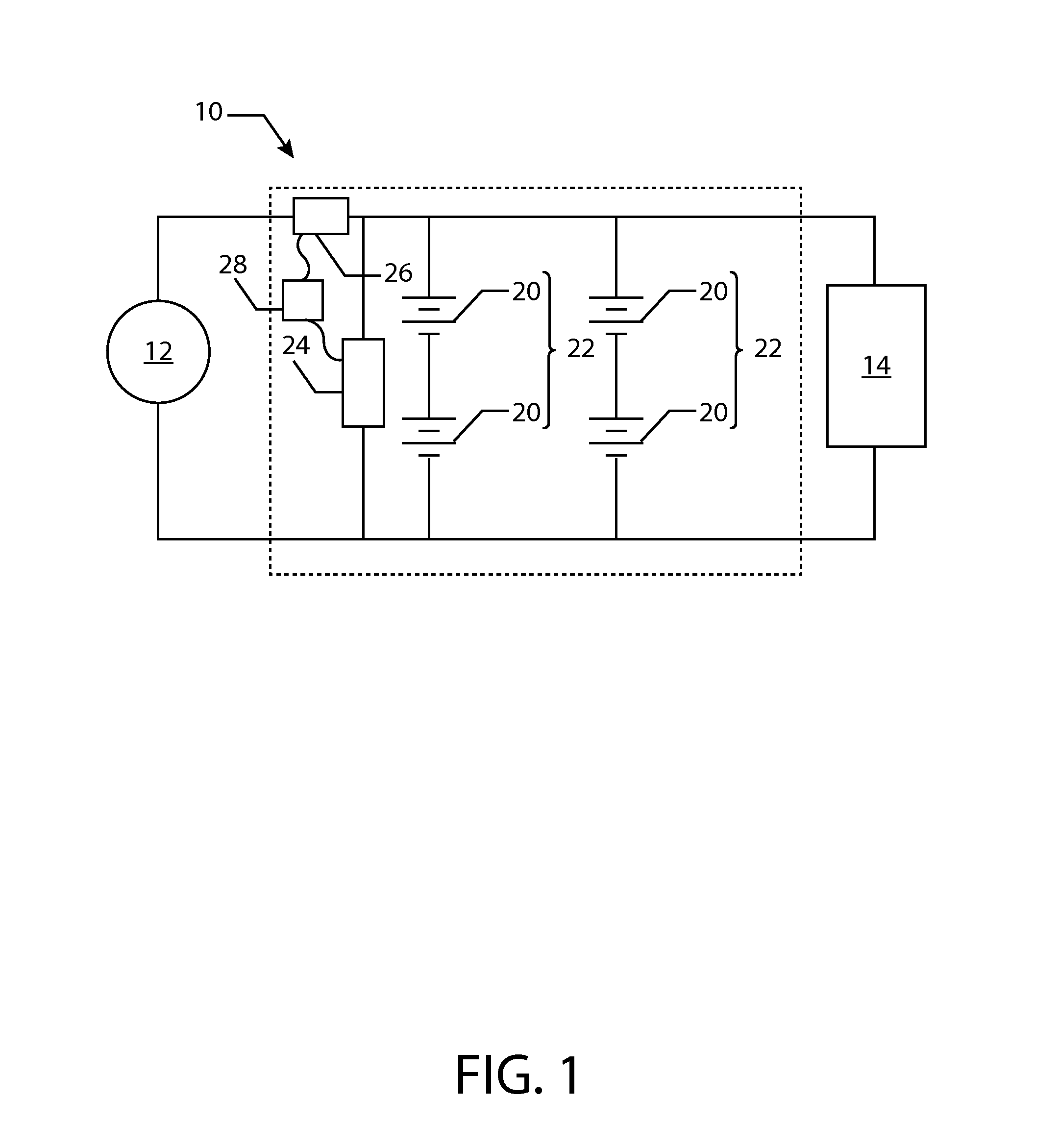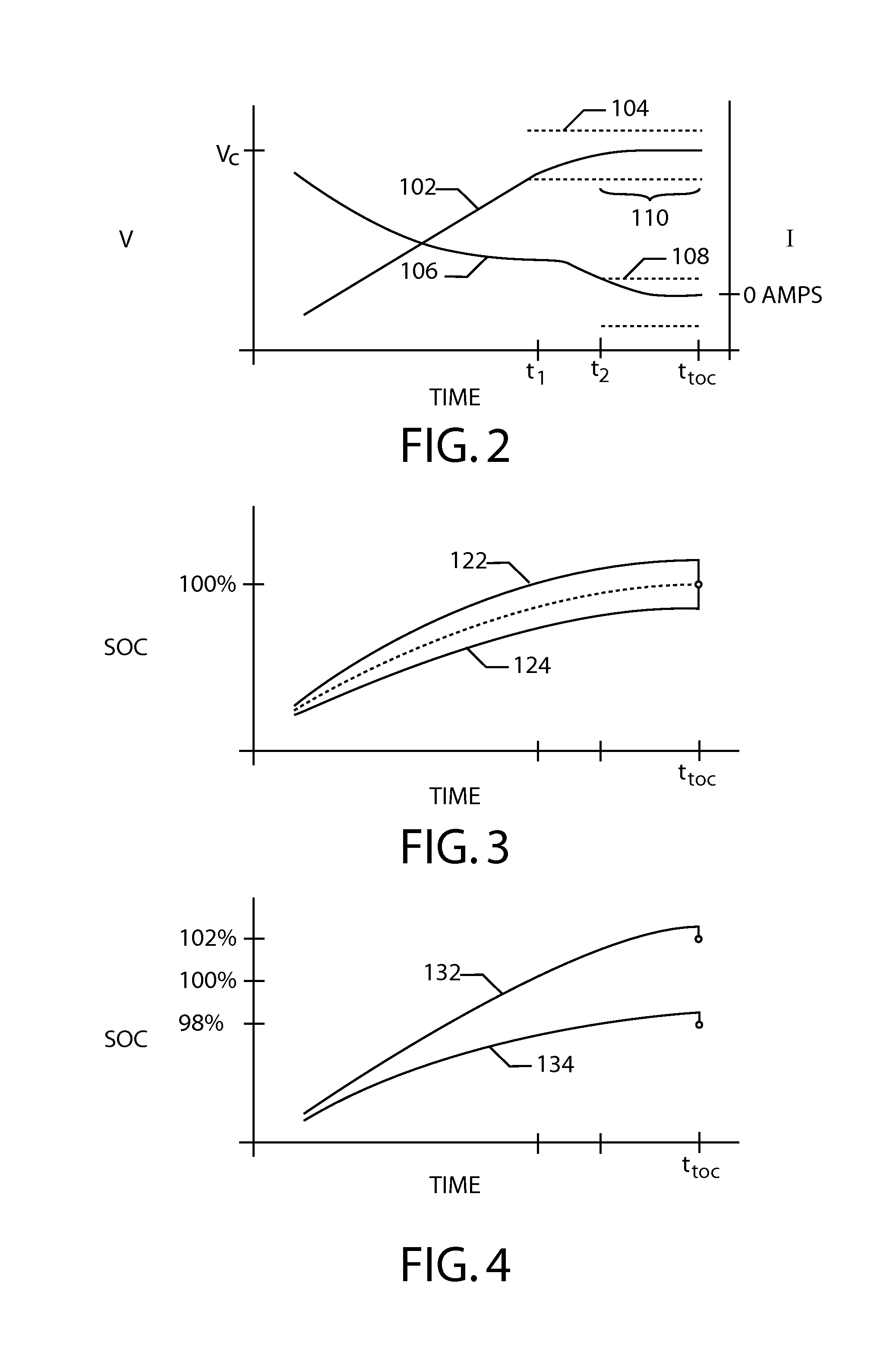System and method for a rechargeable battery
a rechargeable battery and system technology, applied in the direction of electric vehicles, circuit monitoring/indication, transportation and packaging, etc., can solve the problems of premature deterioration of damage to the electrochemical cells of the battery, and unsatisfactory battery performance, etc., to reduce the charge voltage, and reduce the charge voltag
- Summary
- Abstract
- Description
- Claims
- Application Information
AI Technical Summary
Benefits of technology
Problems solved by technology
Method used
Image
Examples
Embodiment Construction
[0022]The subject matter disclosed herein relates to a rechargeable battery system and method for a rechargeable battery system. Referring generally to FIGS. 1 through 6, embodiments of a rechargeable battery system and method of operating a rechargeable battery system are disclosed.
[0023]Referring to FIG. 1, an embodiment of a rechargeable battery system is illustrated, which has a rechargeable battery 10 connected between a source 12 and a load 14. The source 12 may be a variety of electrical power generation devices or systems. In one embodiment, the source 12 is a regenerative brake system of a vehicle, such as an automobile or train. In another embodiment, the source 12 is an internal combustion engine in combination with a generator or alternator configured to produce electrical power. In yet another embodiment, the source 12 is an electricity distribution system, such as a national power grid, electric utility or other commercially available electrical supply. In various embo...
PUM
 Login to View More
Login to View More Abstract
Description
Claims
Application Information
 Login to View More
Login to View More - R&D
- Intellectual Property
- Life Sciences
- Materials
- Tech Scout
- Unparalleled Data Quality
- Higher Quality Content
- 60% Fewer Hallucinations
Browse by: Latest US Patents, China's latest patents, Technical Efficacy Thesaurus, Application Domain, Technology Topic, Popular Technical Reports.
© 2025 PatSnap. All rights reserved.Legal|Privacy policy|Modern Slavery Act Transparency Statement|Sitemap|About US| Contact US: help@patsnap.com



